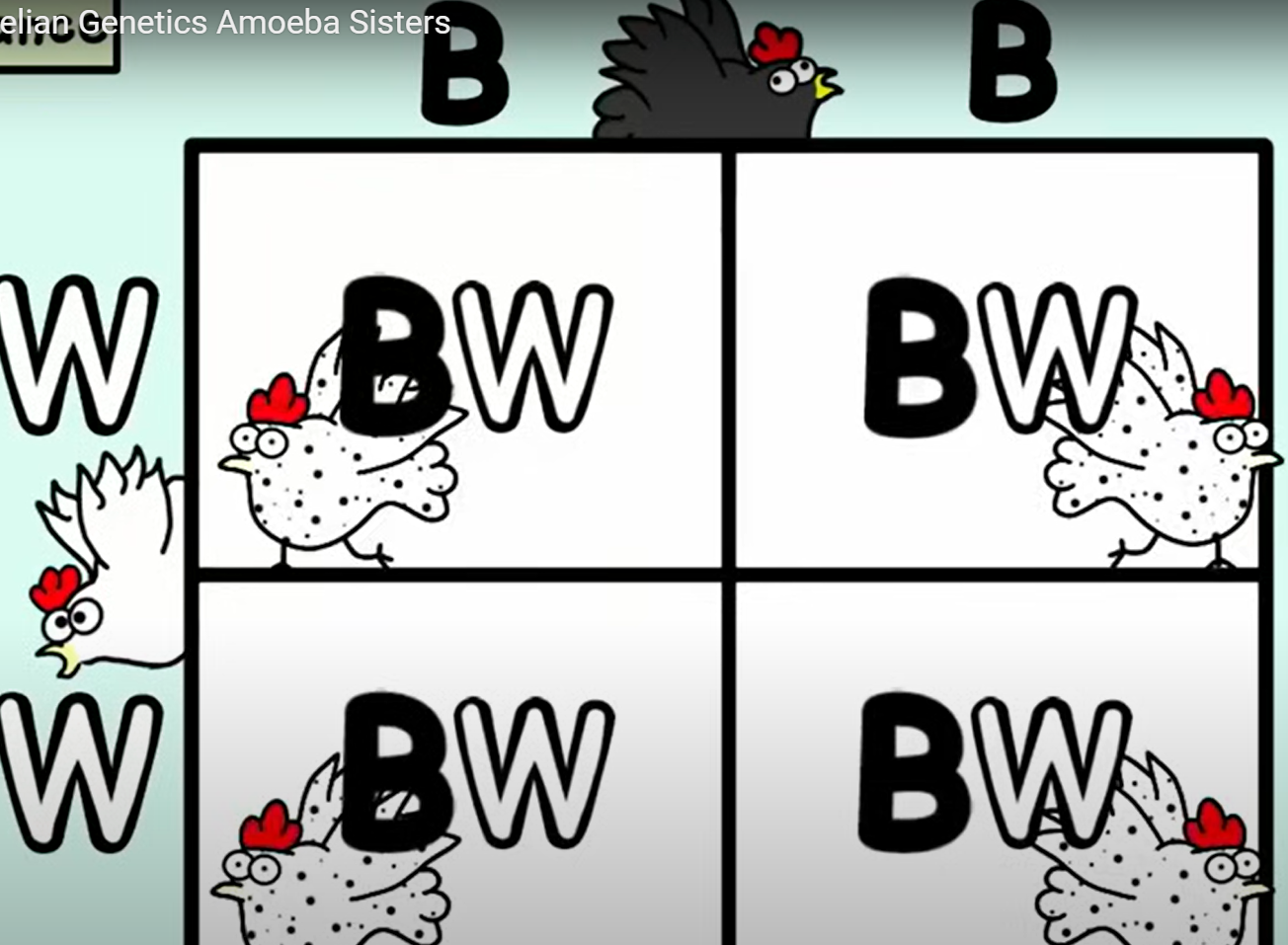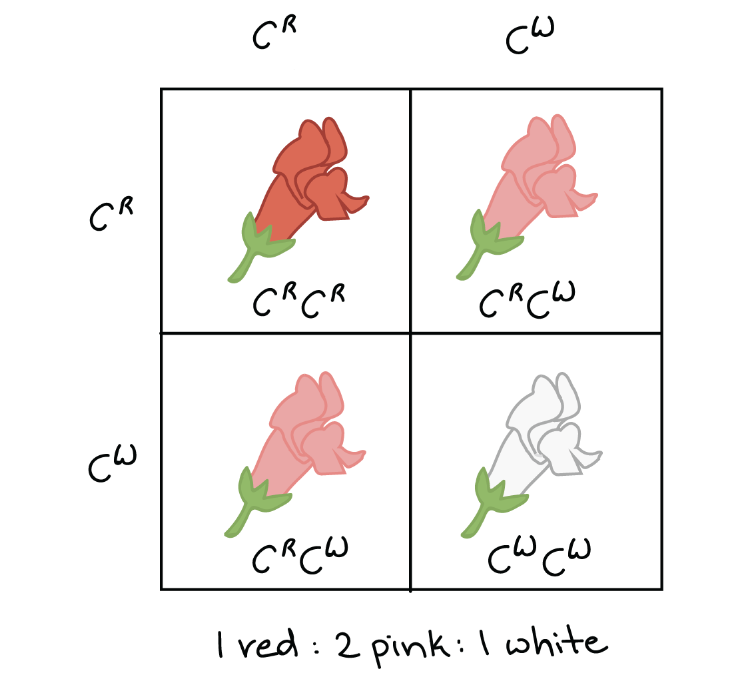
Unit 5 Review
Meiosis
specialized diploid cells splits in ½ 2x making 4 sperate cells
46 chromosomes (23- Maternal and 23 - Paternal)
Haploid Cells - ½ of a full set of chromosomes
Egg and Sperm (gametes)
Very similar to mitosis but done twice to produce 4 separate cells
Mendelian Genetics
From Gregor Mendel
Crossed pea plants and made offspring from the original
1st cross - P (parental) cross
F1 cross - offspring
F2 cross - offspring x offspring
3:1 ratio
Law of Segregation
separation of the 2 alleles
1:2 ratio of getting the genotype 50%
Law of Independent Assortment
the alleles of two different genes get sorted into gametes independently of one another
Diseases
Huntington’s Diseases
degeneration of nerve fibers
uncontrollable shakes and causes death
Dominant
use pedigree for family risk
don’t know abt it until mid-age
Non Mendelian Genetics
do not follow the Mendelian rules
Incomplete dominance
the phenotype of a heterozygous organism becomes a blend between the phenotypes of its homozygous parents'
none are dominant
Codominance
both alleles are simultaneously expressed in the heterozygote (BW)
common in animals
both are dominant

Sex-linked v Autosomal diseases
Sex-linked
mainly affects males more than females
maybe skipped a generation
Autosomal
affect both males and females equally
Dominant
traits from 1 parent
Recessive
traits from both parents
Epistasis
When the phenotype of 1 gene at 1 alters the phenotype of another gene
albino mouses
Red hair
Polygenic Inheritance
effect of 2 genes on 1 character
height, eye color, hair color
AaBbCc
Unit 5 Review
Meiosis
specialized diploid cells splits in ½ 2x making 4 sperate cells
46 chromosomes (23- Maternal and 23 - Paternal)
Haploid Cells - ½ of a full set of chromosomes
Egg and Sperm (gametes)
Very similar to mitosis but done twice to produce 4 separate cells
Mendelian Genetics
From Gregor Mendel
Crossed pea plants and made offspring from the original
1st cross - P (parental) cross
F1 cross - offspring
F2 cross - offspring x offspring
3:1 ratio
Law of Segregation
separation of the 2 alleles
1:2 ratio of getting the genotype 50%
Law of Independent Assortment
the alleles of two different genes get sorted into gametes independently of one another
Diseases
Huntington’s Diseases
degeneration of nerve fibers
uncontrollable shakes and causes death
Dominant
use pedigree for family risk
don’t know abt it until mid-age
Non Mendelian Genetics
do not follow the Mendelian rules
Incomplete dominance
the phenotype of a heterozygous organism becomes a blend between the phenotypes of its homozygous parents'
none are dominant
Codominance
both alleles are simultaneously expressed in the heterozygote (BW)
common in animals
both are dominant

Sex-linked v Autosomal diseases
Sex-linked
mainly affects males more than females
maybe skipped a generation
Autosomal
affect both males and females equally
Dominant
traits from 1 parent
Recessive
traits from both parents
Epistasis
When the phenotype of 1 gene at 1 alters the phenotype of another gene
albino mouses
Red hair
Polygenic Inheritance
effect of 2 genes on 1 character
height, eye color, hair color
AaBbCc
 Knowt
Knowt

